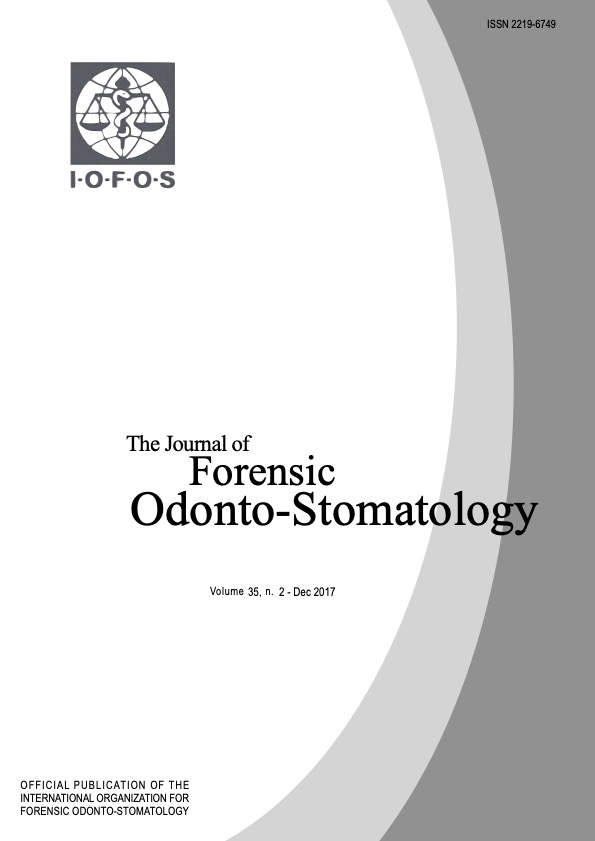An automated technique to stage lower third molar development on panoramic radiographs for age estimation: a pilot study
Abstract
Background: Automated methods to evaluate growth of hand and wrist bones on radiographs and magnetic resonance imaging have been developed. They can be applied to estimate age in children and subadults. Automated methods require the software to (1) recognise the region of interest in the image(s), (2) evaluate the degree of development and (3) correlate this to the age of the subject based on a reference population. For age estimation based on third molars an automated method for step (1) has been presented for 3D magnetic resonance imaging and is currently being optimised (Unterpirker et al. 2015).
Aim: To develop an automated method for step (2) based on lower third molars on panoramic radiographs.
Materials and methods: A modified Demirjian staging technique including ten developmental stages was developed. Twenty panoramic radiographs per stage per gender were retrospectively selected for FDI element 38. Two observers decided in consensus about the stages. When necessary, a third observer acted as a referee to establish the reference stage for the considered third molar. This set of radiographs was used as training data for machine learning algorithms for automated staging. First, image contrast settings were optimised to evaluate the third molar of interest and a rectangular bounding box was placed around it in a standardised way using Adobe Photoshop CC 2017 software. This bounding box indicated the region of interest for the next step. Second, several machine learning algorithms available in MATLAB R2017a software were applied for automated stage recognition. Third, the classification performance was evaluated in a 5-fold cross-validation scenario, using different validation metrics (accuracy, Rank-N recognition rate, mean absolute difference, linear kappa coefficient).
Results: Transfer Learning as a type of Deep Learning Convolutional Neural Network approach outperformed all other tested approaches. Mean accuracy equalled 0.51, mean absolute difference was 0.6 stages and mean linearly weighted kappa was 0.82.
Conclusion: The overall performance of the presented automated pilot technique to stage lower third molar development on panoramic radiographs was similar to staging by human observers. It will be further optimised in future research, since it represents a necessary step to achieve a fully automated dental age estimation method, which to date is not available.

